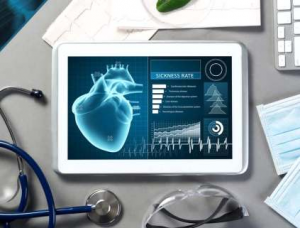The medical device market in france had an estimated turnover of €31. 2 billion for the year 2019. The market turnover for medical devices exported from france is estimated at €8. 9 billion, which is 26% of the total market. The market is expected to see an annual growth of about 2% for the next several years(trade. Gov)
France is a transcontinental country spanning Western Europe and overseas regions and territories in the Americas and the Atlantic, Pacific and Indian Oceans.
Including all of its territories, France has twelve time zones, the most of any country. Its metropolitan area extends from the Rhine to the Atlantic Ocean and from the Mediterranean Sea to the English Channel and the North Sea; overseas territories include French Guiana in South America, Saint Pierre and Miquelon in the North Atlantic, the French West Indies, and several islands in Oceania and the Indian Ocean. Due to its several coastal territories, France has the largest exclusive economic zone in the world.
 France borders Belgium, Luxembourg, Germany, Switzerland, Monaco, Italy, Andorra and Spain in Europe, as well as the Netherlands, Suriname and Brazil in the Americas. Its eighteen integral regions (five of which are overseas) span a combined area of 643,801 km2 (248,573 sq mi) and over 67 million people (as of May 2021). France is a unitary semi-presidential republic with its capital in Paris, the country’s largest city and main cultural and commercial center; other major urban areas include Lyon, Marseille, Toulouse, Bordeaux, Lille and Nice. France retains its centuries-long status as a global center of art, science and philosophy. It hosts the öfth-largest number of UNESCO World Heritage Sites and is the world’s leading tourist destination, receiving over 89 million foreign visitors in 2018. France is a developed country with the world’s seventh-largest economy by nominal GDP and ninth-largest by PPP; in terms of aggregate household wealth, it ranks fourth in the world. France performs well in international rankings of education, health care, life expectancy and human development. It remains a great power in global affairs, being one of the öve permanent members of the United Nations Security Council and an official nuclear-weapon state. France is a founding and leading member of the European Union and the Eurozone, as well as a key member of the Group of Seven, North Atlantic Treaty Organization (NATO), Organization for Economic Co-operation and Development (OECD) and La Francophonie.
France borders Belgium, Luxembourg, Germany, Switzerland, Monaco, Italy, Andorra and Spain in Europe, as well as the Netherlands, Suriname and Brazil in the Americas. Its eighteen integral regions (five of which are overseas) span a combined area of 643,801 km2 (248,573 sq mi) and over 67 million people (as of May 2021). France is a unitary semi-presidential republic with its capital in Paris, the country’s largest city and main cultural and commercial center; other major urban areas include Lyon, Marseille, Toulouse, Bordeaux, Lille and Nice. France retains its centuries-long status as a global center of art, science and philosophy. It hosts the öfth-largest number of UNESCO World Heritage Sites and is the world’s leading tourist destination, receiving over 89 million foreign visitors in 2018. France is a developed country with the world’s seventh-largest economy by nominal GDP and ninth-largest by PPP; in terms of aggregate household wealth, it ranks fourth in the world. France performs well in international rankings of education, health care, life expectancy and human development. It remains a great power in global affairs, being one of the öve permanent members of the United Nations Security Council and an official nuclear-weapon state. France is a founding and leading member of the European Union and the Eurozone, as well as a key member of the Group of Seven, North Atlantic Treaty Organization (NATO), Organization for Economic Co-operation and Development (OECD) and La Francophonie.
French healthcare sector
Like other European Welfare States, France has a system of universal health care. This is largely financed by the government through a system of national health insurance. However, there are some major differences in the structure of the French healthcare system and in its financing, versus its EU peers. Most crucially, France spends over 11 percent of GDP on health care, much higher than the EU average. The French government sets the national health strategy and allocates budgeted expenditures to regional health agencies, which are responsible for planning and service delivery. Enrollment in France’s statutory health insurance system is mandatory. The system covers most costs for hospital, physician, and long-term care, as well as prescription drugs; patients are responsible for coinsurance, copayments, and balance bills for physician charges that exceed covered fees. The insurance system is funded primarily by payroll taxes (paid by employers and employees), a national income tax, and tax levies on certain industries and products.
Ninety-five percent of citizens have supplemental insurance to help with these out of-pocket costs, as well as dental, hearing and vision care. The French hospital sector accounts for almost half total healthcare spending. Of this, just under half is directed at existing infrastructure, with 30 percent going to upgrades and renewal, and 20 percent to new projects. Overall, French hospitals have long been associated with a lack of transparency, along with little incentives for efficiency at individual facilities. Equally important is a sharp deterioration in the quality of buildings and other infrastructure. This is partly due to dwindling outlays on maintenance – ironically, a direct result of reforms in 1996. In the mid-2000s, for example, no fewer than six of 10 university hospitals were reported to have inadequate safety standards in as much as 25-75 percent of their surface area.
Physician density in France has been stable in recent years, at about 3.3 per 1,000 inhabitants in the period 2000-2009. This is more or less in line with the EU average. Nurse numbers have however risen sharply, in line with other major EU countries such as Germany and Italy (but unlike the Netherlands). One reason for this is the decrease in average hospital stay and a considerable increase in emphasis on ambulatory interventions. Nurse density has risen – from 6.7 per 1,000 inhabitants in 2000, to 7.6 in 2005 and an estimated 8 in 2008. This corresponds to a satisfactory ratio of 2.5 per physician. However, France has still some way to go. Nurse density per 1,000 inhabitants in 2008 in Germany was 11.6.
 Medical devices
Medical devices
The medical device market in France had an estimated turnover of €31.2 billion for the year 2019. The market turnover for medical devices exported from France is estimated at €8.9 billion, which is 26% of the total market. The market is expected to see an annual growth of about 2% for the next several years (trade.gov).
There are over 1,300 medical device firms in France. One-third of these firms are of foreign origin. Although they only account for one-third of the number of enterprises, foreign enterprises bring in two-thirds of the total turnover. American enterprises alone account for 22% of the total market.
Unlike other medical sectors such as pharmaceuticals where large multi-national corporations often dominate the market, the medical device industry is mainly composed of niche-market producers. Out of the 1,300 enterprises in France, 92% are SMEs, of which 88% exclusively produce medical devices. The medical device sector employs approximately 85,000 people. The best prospects for medical equipment can be found in newly developing sectors such as non-invasive surgery, orthopedics, and disposable medical equipment.
Healthcare professionals in France are highly optimistic about the success of new medical technology. One example of such technology is telemedicine, which is expected to have a major impact on medical care institutions in the coming years. There has been a steady growth of innovative medical procedures in France, such as same-day surgery. This growth is expected to beneöt American medical equipment manufacturers who produce highly innovative devices, as well as those who offer products and services focused on reducing healthcare costs. Technology-intensive expertise France is home to historical medical industries, especially in the pharmaceutical field, such as Sanofi or Ipsen. This sector represents more than €28.7 billion of exports every year. French companies in the healthcare sector have a technology-intensive expertise and a strong capacity for innovation, which gives the country a sustainable competitive advantage.
Moreover, France is known worldwide for its excellent scientific and clinical research, thanks to strong institutions like the National Institute for Health and Medical Research (Inserm) or the National Center for Scientific Research (CNRS). According to World’s Most Innovative Research Institutions, a 2017 ranking by Reuters, four French institutions are amongst the 25 best public research institutions in the world, and circa 500 clinical trials were realized on the French territory between 2014 and 2015.
An additional French specificity: its network of University Hospital Centers (CHU), which places clinical research at the heart of the medical profession.
France owns another strong asset to massively boost innovation: the National Health Data System(SNDS), which is one of the world’s most important medico-administrative databases. However, much remains to be done for the country to be able to fully take advantage of this lever and facilitate the access to such databases. France has recently implemented innovative tools to support health innovation. For instance, the French Investment Bank created the “French Tech Acceleration”, a €200 million fund entirely dedicated to the support of healthcare startups. The research tax credit (C.I.R.) also plays an important role: it provides companies with the partial funding of their R&D strategy and encourages them to hire postgraduates or researchers, by including their salaries and associated social costs in the C.I.R. Thanks to the C.I.R., more than a thousand of PhD students are hired every year in French companies.
















